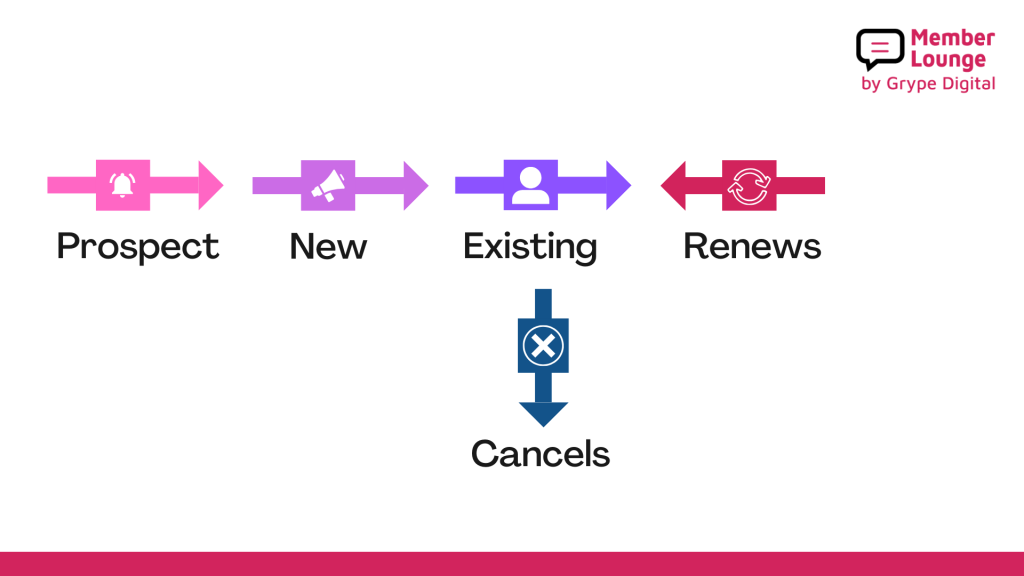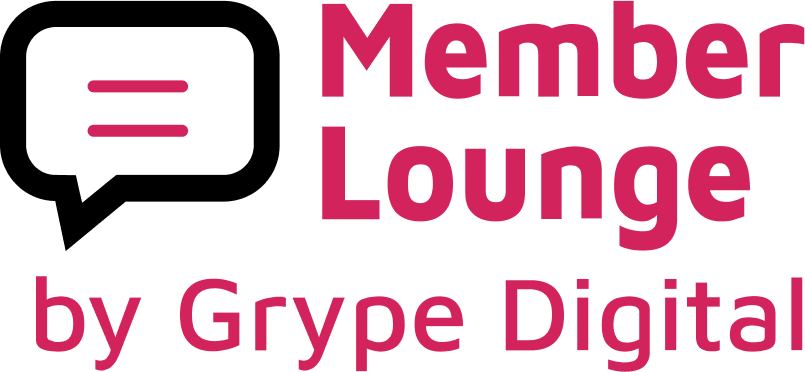Member journey mapping is a powerful tool that allows associations to understand their members’ experiences and identify areas for improvement.
Imagine you are taking a road trip, and just as a road trip involves planning, navigating, and making stops along the way. Similarly, your members embark on a journey with your association starting from the moment they hear about your association. By mapping your member journey, you can identify where your members hit bumps and where they find joy. Making adjustments to these will make their experience smooth, and you’ll increase member retention.

In this blog, we will take you through a step-by-step process of mastering member journey mapping for your association. By the end of this guide, you will be equipped with the knowledge and strategies to optimize your member journey and drive membership engagement, and why it’s a game-changer for your association’s success.
Understanding the Member Journey

Many associations struggle with member journey mapping because they either lack a proper understanding of its importance or have difficulties in identifying key touchpoints and pain points in the member journey and how to use it to drive engagement
The first step is to understand the member journey lifecycle of your association and learn how you can use it to drive engagement and retention.
Below are the 5 stages of the member journey lifecycle you should pay attention to:
Prospects
This is where it all begins, the phase where you attract prospective members to your association. The goal of this stage is to attract leads and get member registration. it is also called the ‘attract’ stage
Questions to ask yourself:
- How can my prospect find me?
- What resources are at my prospect’s disposal
- How does my association benefit a prospective member?
- What do my first touch point and follow-up interactions look like?
- How easy does your website make it for them to join?
New
This is the stage prospect has decided – “Yep, this is the place for me!”, have officially become a member, and started using one or more of your services. The goal here is to help new members find and engage with your offers. This is also called the onboard stage.
Questions to ask yourself:
- Are there new member benefits?
- How easy is my member onboarding process?
- How does the onboarding of new members look?
- How many emails are sent to new members?
- How will new members be integrated into the community?
- How can I improve my member onboarding process?
Existing
At this stage, members would use the association services and participate in community activities more. Your goal here is to help members find more services of great value and increase retention. This is also called the engage stage.
Question to ask yourself:
- Do members have a clear understanding of what tangible value members get?
- Do members participate in membership activities?
- What inspires a new member’s loyalty to your group?
- How easy is it for a new member to locate the membership benefits?
- Is my association community-driven?
- Do members have discussion groups to aid engagement?
Renew
Here members are getting value for cost and would want to renew. The goal here is to renew and ascend membership.
Question to ask yourself:
- Are members satisfied with the member benefits?
- How can I improve member satisfaction?
- How do they get help and support?
Cancel
Not all members will renew, some will cancel due to cost, no time, offer not needed or value not met. The goal here is to offer promotions to help retain and document these reasons so you can improve on them.
Question to ask yourself:
- Did members have issues with renewal?
- How can I retain better?
- What can I do to re-engage?
Not One-Size-Fits-All
It is important to note that each member is unique, and some might breeze through these stages, while others take their time. It’s like a choose-your-own-adventure, and that’s the beauty of it. Understanding these diverse paths helps you tailor the journey, making everyone’s experience outstanding.
Benefits of Member Journey Mapping For Your Association
Let’s talk about why this journey mapping thing is pure gold for your association, and may just be the difference between your association member retention or your losing members continually in your pipeline. Here are the benefits of member journey mapping for your association.
- Enhanced Member Engagement
Member journey mapping helps you spot where members hit a block and where they shine, and you can quickly fix it for enhanced membership engagement.
- Improved Retention Rates
By understanding and creating your member journey, you build a deeper connection with your member, catch issues early, patch them up, and make your association your member’s favorite spot. This would greatly improve your member retention rate
- Data-Driven Decision Making
Data helps you to make better choices, and understand your members: With effective data from your member journey map about your member’s pain point and want, your member preferences and dislikes become clear, and this will help you make a better decision
- Personalization and Customization
Customer journey maps help you tailor experiences that help you make your members feel special and grow your association’s engagement and retention.
Steps to Implement Effective Member Journey Mapping
Building and implementing an effective member journey map is an important step to getting your association moving in the right direction. To come up with your own member growth action plan, you need to be as objective as possible in rating your membership journey.
Here are steps to do this:
- Research and Data Collection: Collect valuable info about members – preferences, behaviors, and motivations. You can do this using surveys and interviews, or gather your member questions during discussion sessions
- Mapping the Member Journey: Get Visual: Imagine a comic strip, but instead of superheroes, it’s your members’ journey. Sketch out each step, from “Hmm, what’s this association?” to “I’m in it for the long haul!”. Use this to spot their pains and wants.
- Analyzing and Identifying Gaps: Identify the gaps that your association needs to serve, connect the dots, and align your service toward that
- Designing Solutions: Now is the time to tailor your association’s services to your member’s wants and needs that you have discovered and build your member experience.
Enhancing Your Member Experiences With Member Journey Audit
Member journey mapping process steps in as a guiding light, helping you to create a path towards better customer engagement, retention, and satisfaction.
Envision a tool that simplifies journey mapping while transforming insights into actionable steps. Our member journey audit, designed with your members in mind, enhances member experiences significantly.
The member journey audit we provide at Member Lounge is a process akin to putting on your members’ shoes and walking through their experiences with your association. It involves identifying every touchpoint and interaction a member has with your brand, from the initial awareness stage to post-purchase engagement.
Evaluate your membership journey through the eyes of your members & develop a strategy that focuses on member retention and engagement with the Member Journey Audit toolkit
Sometimes, a blueprint is all you need to create a masterpiece. These templates play the role of journey-mapping architects and guide you through each step, ensuring you cover all the important points. Think of it as your journey mapping handbook. It breaks down every concept, making it accessible even for beginners.





